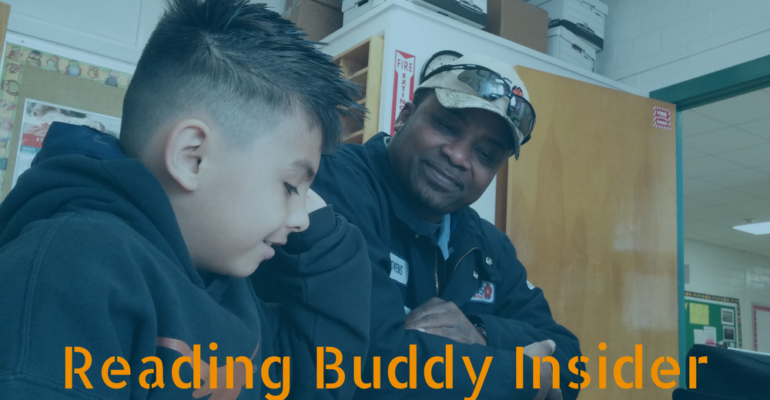The title Reading Buddy implies two roles for the volunteer: reading tutor and supportive mentor. Both roles are important and intertwined. When we build strong, supportive relationships with students they feel more at ease to take the risks that learning requires. Because of this it makes sense to take some time in the first few sessions to get to know your students. What you learn about your students will help you to tailor your sessions to fit their unique interests and talents and help them to feel comfortable tackling challenges with you. Here are some ideas to help you get off to a strong start:
- Complete the Reading Interest Survey and Interest Inventory: These two surveys are an initial tool for you to get more information about your students. Some students may be shy and hesitant to answer questions at first. It may help to start with the Reading Interest survey and allow the student to circle their answers rather than respond verbally. If a student seems to light up when answering a question, try to think of a follow up question. For example, many students love to talk about their pets. You can ask them about their pets’ names, tricks they know, what they look like, etc. It is also a good idea to share your own answers to some of the questions. This will let your students get to know you better and create a more conversational vibe. If there are questions they answer with “I don’t know” or don’t answer at all, it is perfectly fine to give them a few seconds to think, and then move on to a different question.
- Book Selection: Try to pick book choices that connect with what you learn about your students from your conversations and surveys. If you don’t find a book at their level that corresponds with a topic of interest, try to get as close as possible and share with them why you thought they might like those books. This shows students that you were listening to them and value what they have to say. If you know your student is really interested in a certain topic, e.g. sharks or dinosaurs, you can supplement the books in the trunk with a library book on the topic. Just keep in mind that those books will likely be more difficult, and you may have to read the book to the child. Make sure that you are spending the majority of your session reading a book at their reading level, so they still get plenty of practice reading “just right” books.
- Encouragement: Share with your students’ positive observations about how they are reading or thinking about their reading. Praise like “good job,” “great work,” “nice!” helps build your students’ self-esteem, especially when followed by descriptors of what specifically they are doing well, like: “you broke that big word down into chunks” or “you picked a word that would make sense in that sentence.”
- Make It Fun: Try mixing in some sight word bingo, or word family tic-tac-toe at the start or end of a session to get your student excited about your time together. You can also try reading a book to them with silly voices or using the sight word cards to take turns making silly sentences.
Some students are outgoing and eager to tell you all about themselves right from the first moment, while others are reserved, and it may take several weeks before they begin to come out of their shell and share more and more. If you have any concerns about your students or would like more ideas about how to connect with them, make sure to reach out to your Program Manager for support.


Comments are closed.